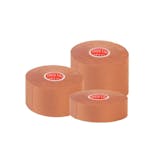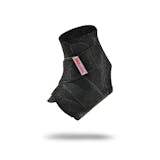We use cookies and similar tools to improve your experience, for analytical purposes, and to personalise our marketing to you.
Please find more information on our privacy policy page. By continuing without changing your settings, you agree to this use.
Accept
Categories
Popular in ''

Item 1 of 0

Welcome to Firstaid4sport.co.uk
I’m pretty sure there’s a universal agreement about the fact that movement is crucial in boxing. It’s a pretty simple formula really: Less movement = more likely to be punched More movement = less likely to be punched Movement is crucial to speed, endurance, reflexes, unpredictability and is an important skill that needs to be developed, but how do we train it? A boxer should always have something in motion whether it’s their head, hands, body or legs. If we look at footage of one of the greatest boxers there ever was, Muhammad Ali, we can see that he was rarely, if ever, not in motion during training or a fight. Keeping your body in motion allows you to create a steady rhythm of movement and move more fluidly. If we take the example of sprinting, it is always easier to break into a sprint if we are already jogging rather than if you are completely stationary. The same can be said for boxing and it will always be easier to find that winning combination or avoid that jab, cross if the body is already in motion and this is where shadowboxing, pad work and sparring come in. During these training exercises movement should be at the forefront of your mind and the movement should include forward, backward, sideways and diagonal steps to increase endurance and agility. As we’ve already stated, the more you move, the harder you are to hit and Ali was a great example of this. Your body has a natural rhythm to it and if you’ve ever exercised for a long period of time, you may have felt your body `click` into a rhythm where everything starts to work together in unison. This needs to be achieved in boxing where your lungs work together with the heart and limbs in total unison to achieve the maximum efficiency of energy. When this unity occurs, endurance, speed, agility and power increase as the body works as a unit instead of parts working against each other and so functions at a higher level than usual which is needed in such a demanding sport as boxing. Another important aspect for boxers involves constant movement, but not committing too much of your body weight to each movement. When this is learnt and you develop the ability to move from your core, you can constantly move freely without tiring. Beginners to boxing are often stiff, rigid and move their bodies as a whole unit therefore lacking speed and endurance. The more seasoned boxers are relaxed and move in the correct way however giving the `Ali look` of effortless speed and motion. Movement for boxers is crucial. Whether its head movement to dodge punches being thrown, hand movement to throw shots, or leg movements to confidently manoeuvre round the ring, good movement is central to being a good fighter. Movement creates steady rhythm, allowing increased speed and endurance but too much movement can be a negative thing. Movement that is wasted by not throwing a punch, dodging a punch or setting up a punch could easily tire and so efficiency of movement is the key. This is where training comes in. We spoke to undefeated 2x Great Britain Gold Medallist, 4x ABA Champion and 2008 and 2009 England Captain Jimmy Kilrain Kelly who said “There’s no point in moving for the sake of moving. It needs to be a movement for purpose. If you’re out of range moving your head isn’t necessary. Foot movement is. So it’s finding the balance and when to adopt correctly” Sparring allows you to move correctly, finding the distance to your opponent and correctly using space to gauge your shots thereby increasing efficiency. Pad work, bag work and shadow boxing allow you again to judge distance and increase power and movement in a no pressure environment, allowing you to nail the basics and understand the most important principle of boxing; movement! More information about Jimmy can be found on his website http://www.jimmykellyjnr.co.uk/ and you can follow him on facebook at https://www.facebook.com/jimmykellyjnr?fref=ts or twitter @J_kilrain_kelly
Product Category
Customer Service
© 2022 | Firstaid4sport. All rights reserved.
- © 2024 Firstaid4sport.co.uk




















